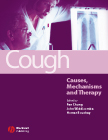Section 1: Introduction
1 The clinical and pathophysiological challenge of cough
2 Epidemiology of cough
3 A brief overview of the mechanisms of cough
Section 2: Cough in the clinic
4 Clinical assessment of cough
5 Measurement and assessment of cough
6 Cough sensitivity: the use of provocation tests
7 Causes, assessment and measurement of cough in children
8 The quality of life in coughers
Section 3: Clinical conditions with cough
9 Cough in lower airway infections
10 Cough in gastro-oesophageal reflux
11 Cough in postnasal drip, rhinitis and rhinosinusitis
12 Cough and airway hyperresponsiveness
13 Cough in chronic obstructive pulmonary disease (COPD)
14 Cough in suppurative airway diseases
15 Cough in cancer patients
Section 4: Pathophysiology
16 Sensory pathways for the cough reflex
17 Neurogenesis of cough
18 Plasticity of vagal afferent fibres mediating cough
19 Motor mechanisms and the mechanics of cough
20 Mucus hypersecretion and mucus clearance in cough
21 Animal models of cough
Section 5: Therapy
22 Mechanisms of actions of centrally acting antitussives -
electrophysiological and neurochemical analysis
23 Pharmacology of peripherally acting antitussives
24 Current and potential future antitussive therapies
25 Placebo effects of antitussive treatments on cough associated
with acute upper respiratory tract infection
26 Mucoactive agents for the treatment of cough
27 Management of cough


